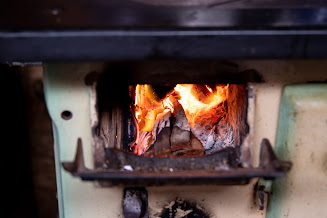Wood Stoves | Types | Tips to Use
In recent years, the wood stove industry has made great technological advances. New designs that burn wood more efficiently, cleaner, and safer have been developed by the EPA. There are different kinds of chimneys in the market based on the actual requirement. There are many chimney brands in India that offer some of the finest products in the world. Never forget to check out some of the best inalsa kitchen chimneys to have a better idea in terms of efficiency and performance.
We are not there yet. Existing inefficient, outdated systems are still in use. There is also a new list that could be problematic with the new technology.
We will be covering both the old as well as the new here, including:
Tips to know while buying a wood stove and a Chimney
If you don’t know what is out there, it can be confusing to go to a stove shop. There are many models to choose from, including small and large, cast-iron and steel, as well as enameled or black. What can you do to make sense of all this?
Don’t panic! It is easy once you are familiar with the basic categories.
All the main categories will be covered, including Franklin stoves and modern catalytic units. Let’s first define key terms.
Clean Burn.
This simply refers to burning the material without releasing too much smoke into the atmosphere.
Efficiency.
This can be a tricky topic, as efficiency can be measured in many different ways.
The efficiency of combustion.
Comparing the actual heat produced to that produced if all combustible materials were made into heat.
Heat Transfer Efficiency.
Heat transfer efficiency is the ratio of heat entering your home to heat produced.
Overall Efficiency
This is the difference in the heat that your home receives compared to what would happen if all combustible materials could be converted into heat.
The most important thing homeowners care about is overall efficiency. Each piece of wood should produce as much heat as possible in your home as possible.
For those who love facts and figures: Stoves older than EPA-certified generally have a 50% efficiency or lower. Stoves that are EPA-certified pass at 63%-72% or higher.
EPA Regulations
The U.S. Environmental Protection Agency (EPA), established rules in 1988 to ensure cleaner operation of wood stoves. All stoves manufactured in the United States must be tested and designed to comply with strict emissions control and efficiency standards. We will be covering the different types of stoves and explaining how they are more efficient and how it benefits the environment as well as the stove user.
Not all stoves are exempted from EPA regulations.
Chimney problems for animals
If there isn’t a cap, raccoons and squirrels, birds, bats, and other animals could get into chimneys. These animals can also bring fleas, ticks, and other diseases into your home. Animals in your chimney can pose a serious threat to your health. Call your chimney professional if you hear or see animals in the chimney. To prevent further infestation, a chimney cap should be installed with a mesh screen mesh.
To prevent animals from getting in, it is a good idea to keep the fireplace damper (or the glass doors) shut.

Join the conversation